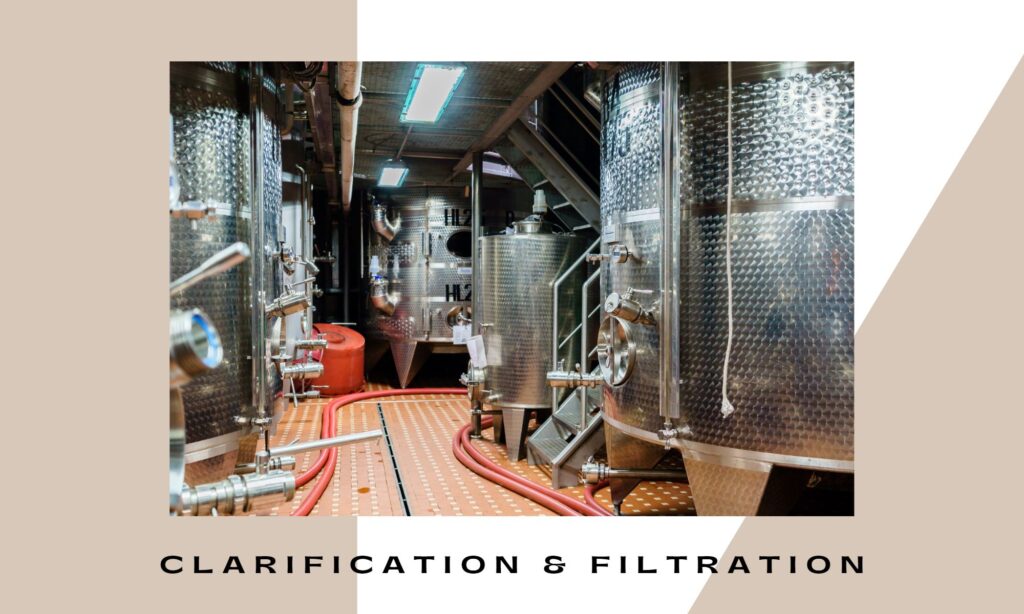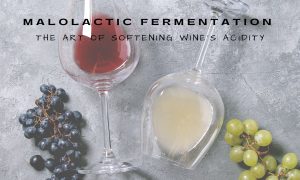Red wine is a popular and beloved beverage around the world, enjoyed for its rich flavor, complexity, and ability to pair well with a variety of foods. But have you ever wondered how red wine is made and what goes into the process of creating the perfect bottle? One important aspect of winemaking is the clarification and filtration process. While often overlooked, these steps play a crucial role in ensuring that the wine is clear, stable, and free of impurities. In this article, we’ll take a closer look at the clarification and filtration process of making red wine, exploring what each step entails and why it matters for the final product. Whether you’re a wine enthusiast or simply curious about the winemaking process, this guide will provide valuable insights into one of the most important aspects of creating a great bottle of red wine.
Clarification and Filtration are not the same thing, but they are both important steps in the production of red wine. Clarification refers to the process of removing solid particles and impurities from the grape juice or “must” after primary fermentation. This is typically done through settling or centrifugation (a centrifuge machine, which spins at a high speed creates a centrifugal force that causes the heavier particles to settle to the bottom of the container). Clarification can also be achieved through the use of fining agents (such as bentonite clay), which are added to the juice to bind with the impurities and cause them to settle out more quickly.
Filtration, on the other hand, is a process that takes place after fermentation and aging, and it involves passing the wine through a filter to remove any remaining solids, yeast cells, or bacteria. Filtration can help improve the clarity and stability of the wine, as well as remove any unwanted flavors or aromas. While both clarification and filtration aim to improve the clarity and purity of the wine, they are distinct processes that occur at different stages in the winemaking process.
Continue reading for more information!
To clarify red wine, winemakers will use a variety of methods. One common method is to transfer the wine to a different a large stainless-steel tank and allow the solids floating in the wine to settle to the bottom of the tank which is a process known as racking. The “solid-free” wine can then be siphoned off the top with a hose and transferred to another tank for further aging while the solids remain at the bottom of the first tank.
Another method is to use fining agents, which are substances that attract and bond with the impurities in the wine, making them easier to remove.
The most common agents used in fining are:
1. Bentonite: A type of clay that is used to remove proteins from wine and improve its clarity.
2. Gelatin: A protein-based fining agent that is derived from animal collagen, typically sourced from pork or beef.
3. Casein: Another protein-based fining agent that is derived from milk.
4. Activated charcoal: A highly porous material that can help remove unwanted color, flavor, and odor compounds from wine.
5. Isinglass: A fining agent made from the swim bladders of fish, typically sturgeon, that is used to remove sediment from wine.
6. Egg whites: A natural protein-based fining agent that can help improve the clarity and texture of wine.
Filtration is an important step in the production of red wine that helps to clarify the wine and remove any remaining solids, yeasts, bacteria, or other unwanted substances. There are several types of filters used in red wine production, each with its own advantages and disadvantages.
1. Depth Filters: Depth filters are made of various porous materials, such as cellulose fibers, and work by trapping the particles as the wine flows through the filter. This type of filter is often used as a pre-filter to remove large particles before passing the wine through a more fine filter.
2. Cross-Flow Filters: Cross-flow filters use a series of membranes to filter the wine. The wine is forced through the membrane under pressure, with the solids and impurities being left behind while the wine passes through.
3. Plate and Frame Filters: Plate and frame filters are made up of a series of plates and frames that are coated with filter pads or sheets. The wine is pumped through the filter, and the pads or sheets trap the solids and impurities.
4. Membrane Filters: Membrane filters are made of a thin, porous membrane that allows only certain-sized particles to pass through. The wine is forced through the membrane, with any particles larger than the pore size being left behind.
Once the wine has been filtered, it may be further aged in barrels or tanks before being bottled. Ultimately, the goal of clarification and filtration is to produce a clear, stable, and visually appealing wine that is free from any unwanted flavors or aromas. The exact method used will depend on the specific needs of the winemaker and the characteristics of the wine being produced.















